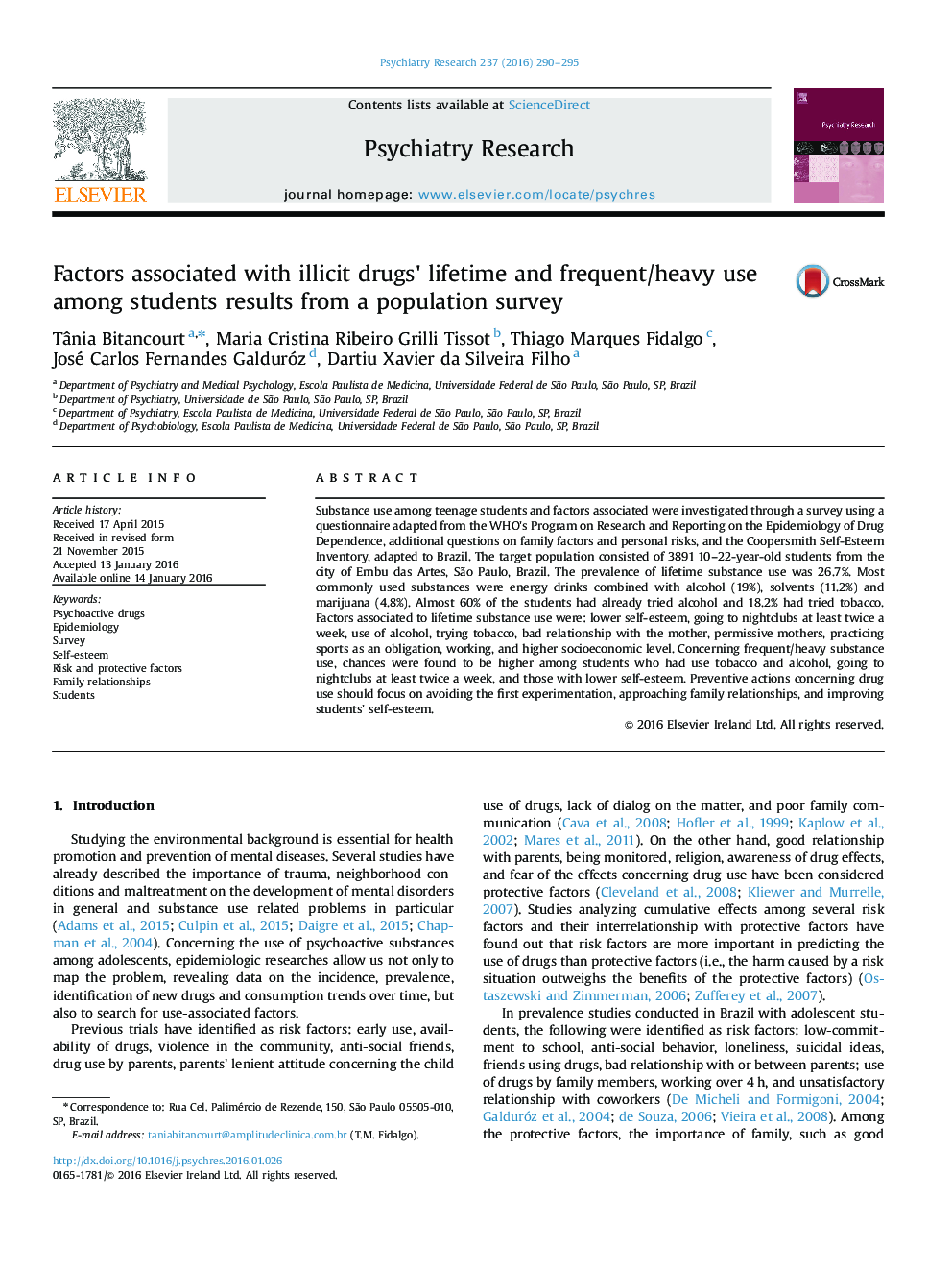| Article ID | Journal | Published Year | Pages | File Type |
|---|---|---|---|---|
| 333127 | Psychiatry Research | 2016 | 6 Pages |
•A substantial sample of a student population was analyzed (n=3891).•A cross-sectional epidemiologic study was conducted.•Low-self-esteem was found to increase chances of drug use.•Higher socio-economic levels were found to be associated with drug use.•Permissive mothers were associated with lifetime drug use.
Substance use among teenage students and factors associated were investigated through a survey using a questionnaire adapted from the WHO's Program on Research and Reporting on the Epidemiology of Drug Dependence, additional questions on family factors and personal risks, and the Coopersmith Self-Esteem Inventory, adapted to Brazil. The target population consisted of 3891 10–22-year-old students from the city of Embu das Artes, São Paulo, Brazil. The prevalence of lifetime substance use was 26.7%. Most commonly used substances were energy drinks combined with alcohol (19%), solvents (11.2%) and marijuana (4.8%). Almost 60% of the students had already tried alcohol and 18.2% had tried tobacco. Factors associated to lifetime substance use were: lower self-esteem, going to nightclubs at least twice a week, use of alcohol, trying tobacco, bad relationship with the mother, permissive mothers, practicing sports as an obligation, working, and higher socioeconomic level. Concerning frequent/heavy substance use, chances were found to be higher among students who had use tobacco and alcohol, going to nightclubs at least twice a week, and those with lower self-esteem. Preventive actions concerning drug use should focus on avoiding the first experimentation, approaching family relationships, and improving students' self-esteem.
